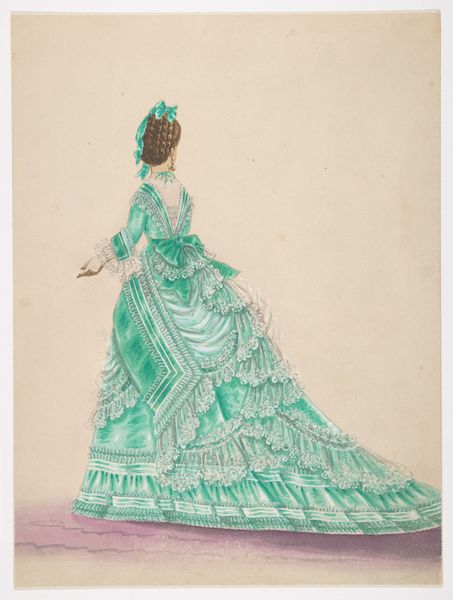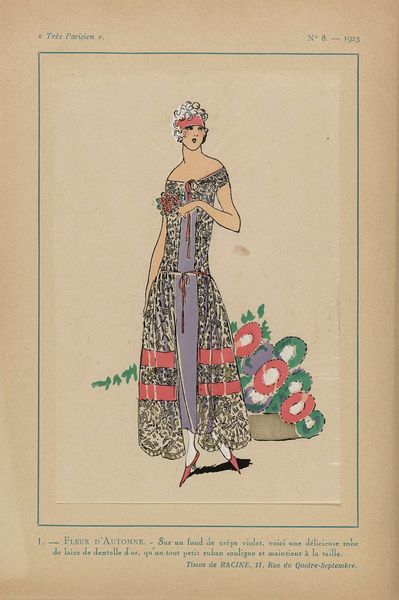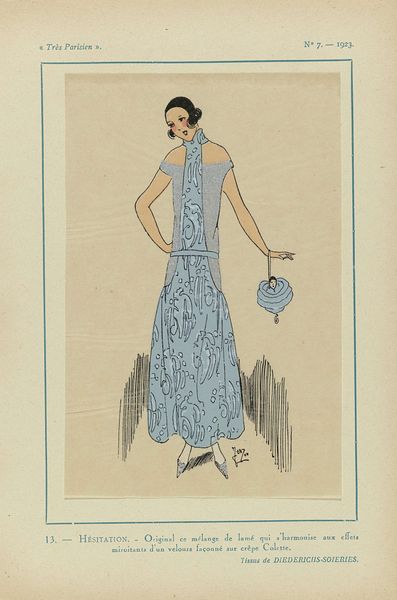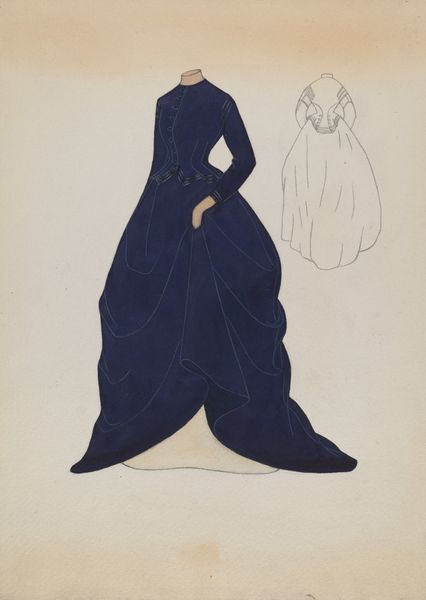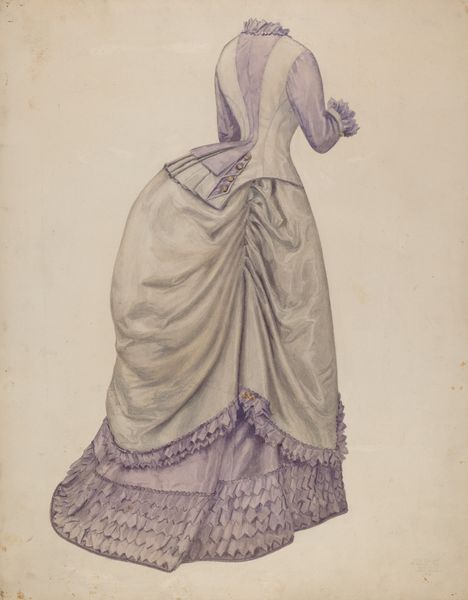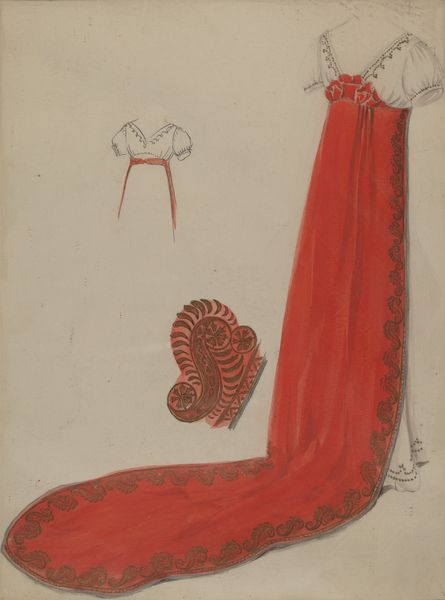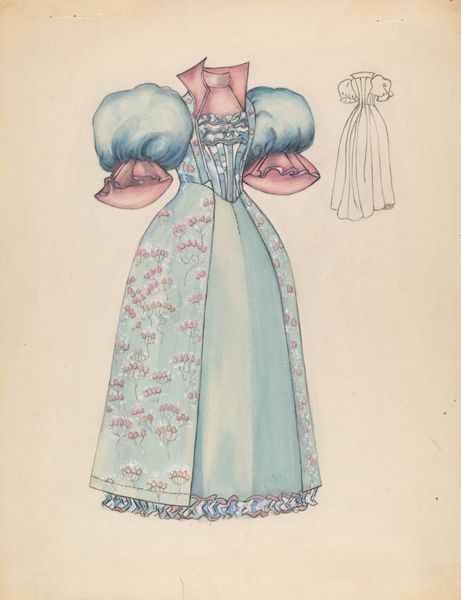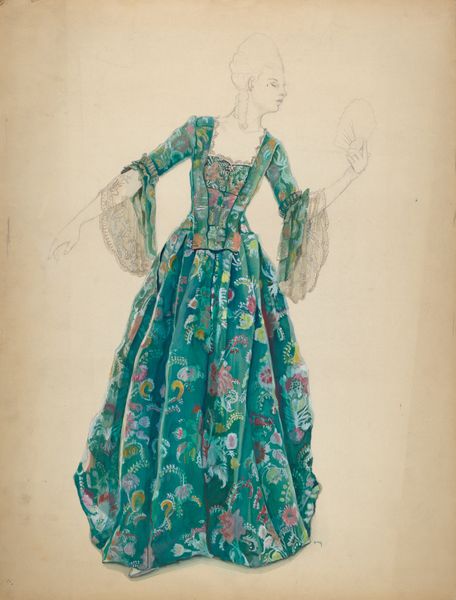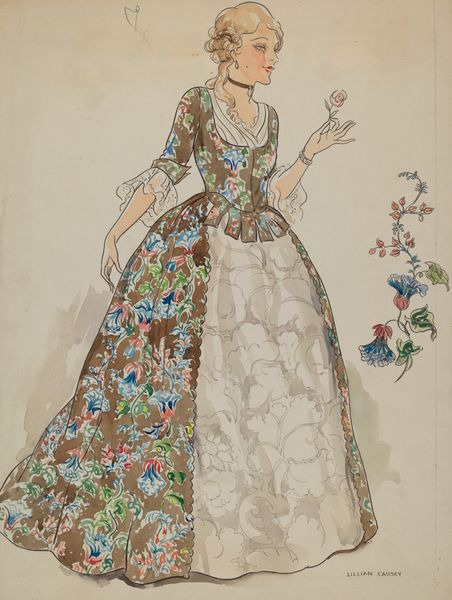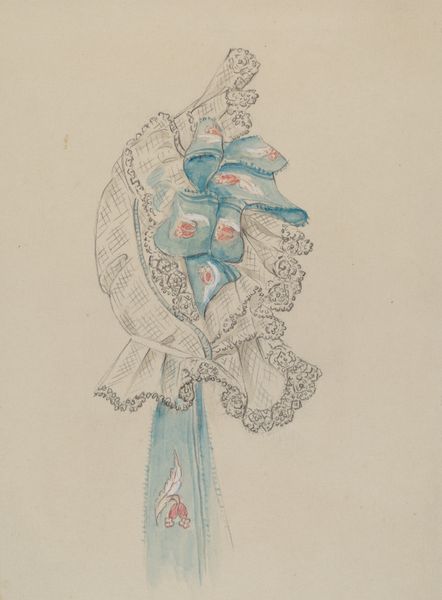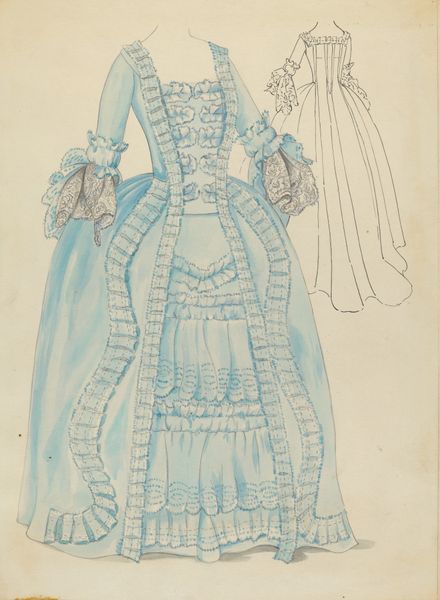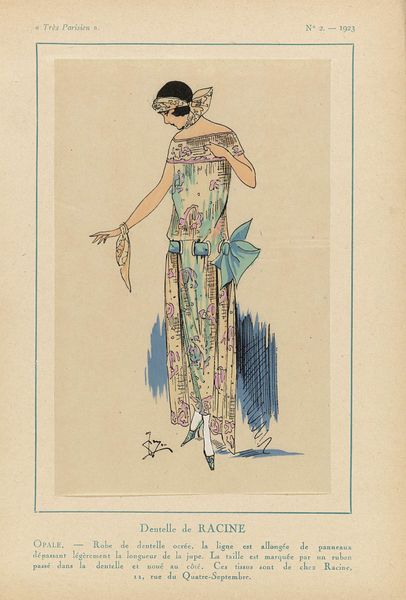
drawing, print, acrylic-paint
#
portrait
#
art-deco
#
drawing
# print
#
acrylic-paint
#
figuration
#
costume
Dimensions: sheet: 9 x 6 1/2 in. (22.9 x 16.5 cm)
Copyright: Public Domain
Curator: Well, isn’t this glamorous? An anonymous “Design for a Theater Costume,” created sometime between 1915 and 1944, mixing drawing, print and acrylic paint. It’s currently housed here at the Met. Editor: It has a definite allure. The color palette and the figure's poised stance suggest a theatrical presence, maybe a bit of heightened drama that aligns with shifting societal roles for women in the early 20th century. The flapper silhouette mixed with almost art-deco patterns speaks volumes. Curator: Exactly! Think about the social context in that time period; we have women actively challenging norms, pushing boundaries both on stage and in society. A costume design like this then becomes part of that larger conversation about representation and agency. I believe the question becomes one of agency. Whose gaze is this fulfilling, the wearer or the viewer? Editor: Interesting! We see echoes of historical sources—Greco-Roman drapery, perhaps? Also, there are nods toward more contemporary trends like the streamlining we associate with art-deco; perhaps this costume attempts to blend ancient ideals of femininity with modern desires of a contemporary society searching for a post-war identity. The choice of medium seems appropriate too, a mix of classical draftsmanship and emerging mass production methods for printmaking Curator: Definitely. And what’s the cultural story here? We can analyze who typically designs costumes, what theatrical roles are afforded certain bodies, and then unpack the social expectations associated with them. What does this dress communicate about performance and gender on the stage, especially in contrast to say, street style during these years? Is this costume revolutionary, reductive, or both at once? Editor: It makes you ponder how performance reshapes our vision of what it meant to be an early-modern, “New Woman.” Curator: Precisely! A simple design transforms when we interrogate the powers and the counter-narratives inherent in every creative choice, don’t you think? Editor: Indeed! It's like unraveling a time capsule; this costume embodies an era poised between tradition and radical cultural reformation.
Comments
No comments
Be the first to comment and join the conversation on the ultimate creative platform.
